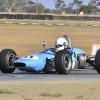My first thought is that it is changing the suspension geometry, and therefore is illegal.
But Mercedes seem to have taken the view, shared by the FIA, that it is a steering system and thus does not fall foul of the regulations.
However, since the system is activated on the straight it's not actually steering, and the suspension geometry is altered I would argue that it is illegal.
The biggest argument must, surely, be about the safety of the system. Moving the steering wheel/column in and out must increase the risk of failure of the steering.
Although the FIA technical department has some very good people, your post reinforces the point that the FIA is poor at writing rules and judging by the number of 'requests for clarity' that to and fro between the teams before and during the season.
It's all retro legislation.
On a slightly different point, some generic clarifications are issued to all teams, whereas some specific ones, such as the DAS, can be confidential.
The wording of these decisions is along the lines of 'It is the opinion of the Technical Committee that 'such and such' enquiry is in breach/ complies with 'such and such' a rule.
It does not actually ban anything but leaves it in no doubt of the result of any investigation/protest.
















